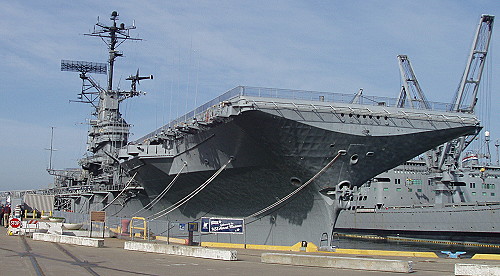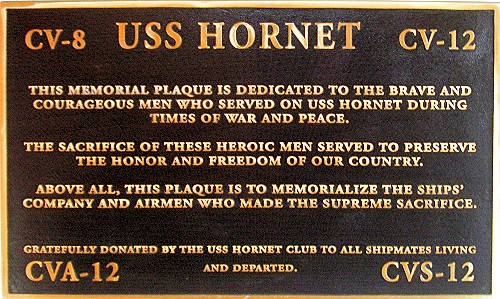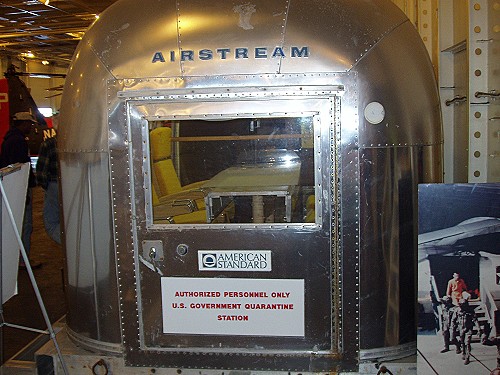 USS Hornet Aircraft Carrier Tour
A trip down memory lane — Alameda Point, CA —
|
|
Begin Tours
Two friends (Jim and Nilo) from our RV club and I (Maury) went to the USS Hornet Museum in the middle of a week with the idea we would avoid weekend crowds. The museum is located in Alameda, California moored at one of the piers at the old Alameda Naval Air Station now called Alameda Point. One member of our small group is a veteran of the US Army (Jim) while the other two (Nilo and Maury) are US Navy veterans. This made the visit a trip down memory lane for two in our group. Our trio arrived shortly after the museum opened and walked off the aircraft carrier almost five hours later — it really didn't seem like we were there that long. When we arrived at the USS Hornet Museum we found parking places out in front of the ship. The Hornet was an impressive sight as we approached the entrance. The pier where the Hornet is moored is the same pier — but on the other side — where my ship tied-up when it was in port. The Alameda Naval Air Station was the home port for my ship, USS Aludra AF-55. As a result, visiting the Hornet put me in a very familiar area.
The U.S.S. Hornet CVS-12 is the ship that recovered the Apollo 11 astronauts — the first men to set foot on the moon — and Apollo 12 astronauts along with the respective command modules during America's moon program. Once on board the Hornet the astronauts were required to enter what was called a Mobile Quarantine Facility (MQF). The MQF was used to isolate astronauts returning from the moon to ensure that any unknown pathogens that might have been picked up on the moon would not get out into the earth's environment. The MQF was a specially constructed Airstream travel trailer. Taking a trip to the moon, walking on the moon and the return to earth that ends up in a travel-trailer, sounds very much like a really great camping trip with out of this world scenery.
The original MQF is now located on board the USS Hornet, on the hanger deck, to display just one of the many chapters in the story of this battle-tested, man-of-war naval vessel. There also is an Apollo command module that is there to show an example of what was retrieved by one of the Hornet's helicopters. The command module — on display — flew in space as an unmanned test vehicle and orbited the earth several times before being retrieved from the sea by crew members of the USS Hornet. This would set the stage for the recovery of future manned flights of Apollo command modules carrying astronauts who had walked on the moon. To fill out the collection of moon stuff, there is the type of helicopter — a Sea King — that was used to retrieve astronauts and CMs. That helicopter — number 66 — has probably been seen by more people around the world than any other such aircraft. The original Sea King number 66 — that plucked the astronauts out of the sea — was lost in a crash at sea in 1975. The Sea King on display in the USS Hornet Museum is a helicopter that was restored and given a paint job to match the original "66" Sea King. This helicopter was used in the movie "Apollo 13".
The tours of the hornet are conducted by volunteer docents who've served in the US Navy aboard aircraft carriers which was the case with our guide for the first and third tour; his name is Carl. The second docent, Bill, who led us on a topside tour, had been a pilot who flew Grumman S-2 Tracker planes like the one on display on the hanger deck. |
Disclaimer |


